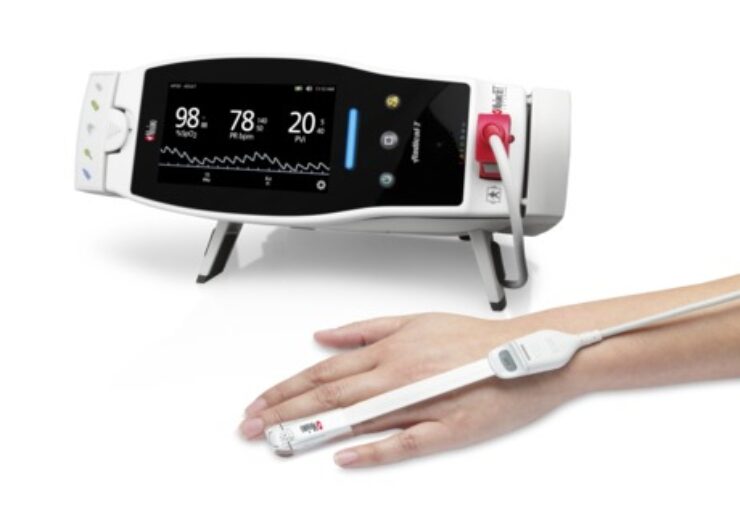Researchers said Masimo PVi can be used as a “Noninvasive, Rapid, and Objective Tool” for helping clinicians predict response to treatment and follow up in children with Obstructive Respiratory Disease

Masimo Radical-7 with PVi. (Credit: Business Wire/ Masimo)
Masimo today announced the findings of a retrospective study published in the American Journal of Emergency Medicine in which Dr. Gülsah Demir and colleagues at Tepecik Research and Training Hospital in Izmir, Turkey investigated the potential ability of Masimo PVi to guide emergency room triage decisions for pediatric patients with signs of obstructive respiratory disease, such as an asthma attack. PVi, or pleth variability index, is a noninvasive measurement of changes in perfusion index that occur during one or more respiratory cycles. The researchers concluded that “Automatic PVi measurement can be used as a noninvasive, rapid, and objective tool in the emergency department triage of patients admitted to the pediatric emergency department with signs of asthma attack or reactive respiratory tract disease.”
Acute asthma attack is a common cause of admission to emergency departments (EDs) among children, and triage by severity is important for determining appropriate clinical treatment. Noting that PVi has been shown to be an accurate method for measuring the degree of pulsus paradoxus, a reduction in systolic blood pressure associated with obstructive respiratory tract disease, the authors sought to understand whether PVi might be of assistance to ED clinicians needing to make rapid triage decisions in such cases. They enrolled 133 patients between the ages of 2 and 18 (median age 5 years old) who arrived at the ED between May 2020 and July 2021 with a diagnosis of asthma attack or reactive respiratory tract disease. During initial examination and after treatment, patients’ PVi levels were measured using Masimo Radical-7 Pulse CO-Oximeters. Severity of the asthma attack/respiratory disease was graded using the Pulmonary Index Score (PIS). Treatment decisions, including to hospitalize or to discharge, were made by clinicians who were blinded to PVi values.
The authors concluded, “The severity of attacks of many patients who apply to the pediatric emergency department because of an attack due to obstructive respiratory tract diseases can be accurately defined with certain clinical evaluation tools. Although PIS is a very important tool for assessing attack severity, it includes some subjective parameters. Automatic PVi measurement can be useful in intensive emergency department conditions, especially in triage, in terms of predicting the response of patients to treatment and follow-up results by quickly determining the severity of attacks, and in terms of reducing subjective clinical decision variations among physicians. This is because it provides objective data.”
In the U.S., PVi is cleared as a noninvasive, dynamic indicator of fluid responsiveness in select populations of mechanically ventilated adult patients.
Source: Company Press Release
